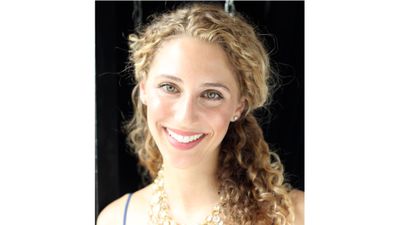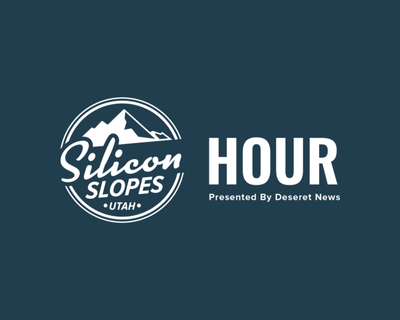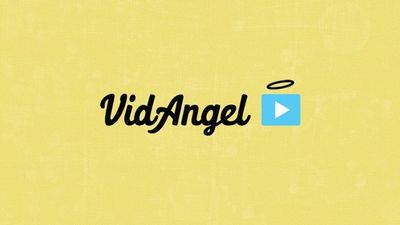This article appears in the Fall 2018 issue of Silicon Slopes Magazine.
Written by Tim Brown, CEO, Candid Communications
When Governor Gary Herbert speaks, Utahns listen. And what he said during this year’s summer vacation had the attention of Utah teens who are so dedicated, they are spending 144 hours over nine weeks in classes designed to set them up for a lucrative career.
“Our future is bright because of what you are doing,” said Gov. Herbert to high school students at summer coding class. “You have a very bright future because you have an understanding of technology.”
Even still, what kind of teen today would spend four hours a day (from 8 a.m. until noon in a classroom Monday through Thursday) for nine straight weeks of their summer vacation in a coding bootcamp? It turns out hundreds of them are doing just that in Utah this summer –– and the count has exploded in the last three years.
It’s all part of Ken Garff’s Code to Success program, inspired three years ago by Rick Folkerson, to help Utah high schoolers get a head start in the world of computer programming.
Rick, president of Garff Foundation, explains it this way: “These students are remarkable in that they see an opportunity to virtually lift themselves into a better paying situation in the future by learning to code through the Code to Success program. And they are excelling in ways we had only dreamed of.”
This year, with a record 930 openings, the Code to Success program received 1,200 applicants from high school students throughout 14 school districts, which held course classes at 27 high school campuses.
Code to Success offers high school summer coding boot camps for incoming freshmen to recently-graduated seniors – and it is absolutely free. Students gain new skills, collaborate with like-minded peers, and make connections in higher education and the tech industry. The 2018 program ran June 11 – August 9, and in a self-guided curriculum designed by Bottega, students learned HTML, CSS, JavaScript and REACT.
All of that sounds great, but is it working? When asked, students across the program respond with an emphatic “YES!”
![]()
“I have always wanted to be a computer engineer,” said Itzel Alamilla, a 17-year-old senior at Taylorsville High School. “I started helping adults with computer problems when I was nine. I love Code to Success because you learn at your own pace and have teacher mentors who let you try things out.”
The oldest of four siblings, Itzel plans to use her skills to help in the healthcare industry. “I would like to learn more tech, medical and biotech fields and create devices to help those in need of better water, heat and shelter.”
That is exactly the design of the program. “We envision young people throughout our state who want to create more, do more and make more of a difference,” said Rick. “And with technology being in their hands since birth, it made sense to offer this free training….Thanks to corporate sponsors, such as Bottega, which is a for-profit coding boot camp in Lehi, we’ve been able to provide actionable skills that will lead to high-paying employment for those who are ready to dive in.”
Providence Hall senior Tiffany Chan is one who has jumped in. Bound for college in her birth state of New York, she knows coding skills will greatly benefit her as she decides to major in law or computer science.
“I’m an artistic person and like to build websites. Already this program has taught me skills to fulfill my artistic ambition,” Tiffany said. “Learning HTML, CSS, Ruby on Rails, JavaScript and REACT has made me a lot more confident in myself.”
And that’s the side benefit to this program. Student after student is saying the program has boosted their own self-confidence, something many said they lacked before joining Code to Success.
Clearly an enthusiastic ambassador of coding, Tiffany was so stoked about the program, she persuaded a friend to sign up. “He likes it, too, because each student can learn at their own pace, and we get to hear success stories directly from guest speakers who are CEOs and founders of tech companies.”
Exposure to industry leaders is key to the Code to Success program.
“We designed this with that in mind for two primary reasons,” said Rick. “First, it inspires the students to see someone who is successfully in the field. Second, it shows CEOs and leaders in the tech world that we have hundreds of coding specialists in the making.”
![]()
And it benefits both sides because tech founders help inspire young minds who have preselected themselves to enter the field sooner than most do in college.
“Code to Success is an incredible program,” said Silicon Slopes Executive Director Clint Betts. “Silicon Slopes is proud to support the important work they're doing to close the talent gap in Utah and to ensure every student in Utah has access to the opportunity that exists in technology.”
What do parents think?
“My dad was supportive,” said Irelan Bailey, 16, Granger High. “He said, ‘You’re always around computers, so sign up.’”
“My parents said it would take a lot of time from my summer schedule, but it was worth it,” said Tiffany. “They saw I was committed to it, and now they say they are proud of me.”
Initially skeptical, Irelan was urged by a teacher to enroll because he saw her interest and told her she would have more job opportunities.
Sometimes the very thought of school and studies can sound boring, but Code to Success students report a different view.
“When I started the coding program, it wasn’t boring at all,” Irelan said. “I’m loving it because I can create my own stuff, and, at the end, we will code and create an actual website.”
Beyond developing confidence, Code to Success builds young citizens who dream bold. “I want to use my coding skills for a job that hasn’t been created yet. I would like to go into the medical field because my mom works at the University of Utah Hospital and I see the good that comes from the medical field every day,” said Irelan.
For some students, stepping into the world of Code to Success is like coming home.
![]()
“I wanted to be a doctor until I dissected a pig and didn’t like it,” said Skyline High sophomore Asiana Le. “Coding lets me work independently and have creative self-expression.”
Now Asiana plans to apply her coding skills to her passion of golf. “I want to own a golf company, where I’ll make a new website.” And that’s just for starters.
To a person, every currently-enrolled Code to Success student said they would recommend the program to friends. Christian Neral, a Code to Success facilitating teacher who teaches at Jordan High and oversees four campuses of Code to Success students, said, “The Code to Success program is fun. The environment is fantastic. The students build friendships with like-minded computer enthusiasts, and in their last two weeks, they will build their own apps. What’s more, they are getting $6,500 worth of coding experience for free.”
More benefits come to each Code to Success graduate, including the opportunity at job leads in the $60,000 range.
“The students who participate, though, are remarkable,” Christian said. “They come from a variety of backgrounds and show up every day because they know it will help them in the future. That takes a lot of drive and maturity.”
Christian sees confidence levels grow, too. “They come in with just enough courage to attend four hours a day, four days a week during the summer. Then they start learning and building apps, and I see their confidence grow exponentially.”
“One of the bonus aspects is when speakers come in for over an hour to present, and the kids ask questions and see what it’s like to get past it all. They see someone who is successful.”
“I had one student who would sleep in my [regular high school] class because he was up so late each night. Now, because he caught the vision in Code to Success, he has founded the high school programming club and will have four years of programming experience by the time he’s 22, which gives him a huge leap ahead of where he would’ve been without Code to Success,” said Christian.
![]()
As the governor predicted, these skills will not only benefit Utah, they will have a global impact. One star-in-the-making is 15-year-old Granger High sophomore Ashley Lujan, who wants to use her coding skills on a more global stage.
“I want to do something that will benefit the world,” Ashley said. “Maybe I will be working in cyber security, tracking criminals and finding lost children. I love creating things and seeing what I code actually appear on the screen.”
Torick Davis is an inaugural Code to Success program student in 2016. Now two years later as a college mentor to the students, he said the skills he learned in Code to Success has greatly prepared him for college.
“Applying myself in those three years has accelerated my career path. We are constantly learning new things, applying them and gaining skills that would have cost each of us thousands of dollars to learn,” he said. “When Governor Herbert announced the IT Pathways challenge, we knew we had to get more students involved in the tech sector. Code to Success answers that challenge and will play a huge role going forward for students throughout the state. The world runs on code now and as Utah grows in technology, all of these tech companies can look to Code to Success for answers.”
The Garff family provided a great start with the Success in Education program, said Rick. But since then, Success in Education has transitioned into a robust public charity.
“We have created the Road to Success, Keys to Success, and Code to Success programs as ways to empower our students with literacy, motivate them to achieve their academic goals, and equip them with the knowledge and skill sets to succeed in a digital world,” said Rick
Knowing that no program can be all good, one downside has surfaced. Tiffany Chan and Irelan Bailey both lamented that more girls weren’t taking the coding program. “It would be great if we had more girls in the program,” said Tiffany. “Girls are really hard workers.”
A New York Times article cited that in 2013, “Girls made up 18.5 percent of A.P. computer science test-takers nationwide, a slight decrease from the year before. In three states, no girls took the test at all.”
“I was in a class as one of the very few girls in it, but I didn’t let that thought get to me. I asked meaningful questions and gained confidence. I want to be a role model,” said Irelan.
![]()
At this rate, Code to Success teachers have no doubt that Irelan — and all of the students who work as diligently — will be a role model far more than they can imagine.
Gov. Herbert believes in them. “If you want a good job, get a good education, and you’re doing that,” he said. “Our Utah population is very computer-literate with the highest percentage of computer usage of any place in America. IT is growing exponentially in the country. The demands of this jobs are high. If you want a good job, this is an area where, if you gain the skill set, you’re going to have a high-paying, lucrative job with a great upside throughout your life. It’s a great career opportunity.”
And with the wisdom of a leader, he left them with this advice: “I hope you’re all committed to finish your high school, to graduate and to go on to college.”
For these forward-thinking students who have spent 144 hours of summer vacation in a coding program, Utah’s future does look bright.
To learn more, contact codetosuccess@sieutah.org or call 801-257-3482.






